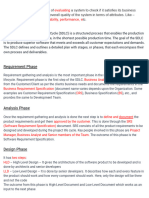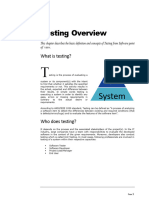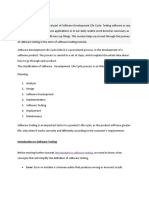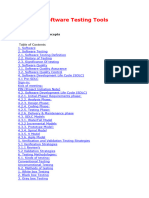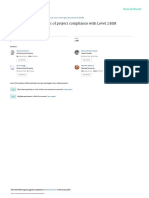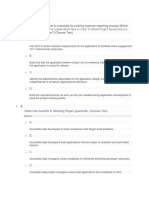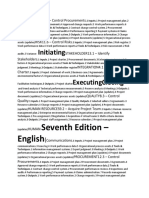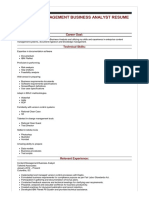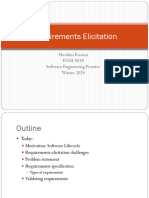0% found this document useful (0 votes)
37 views9 pagesSoftware Testing Notes by Mayur Sharma
Software Evolution is the ongoing process of developing, updating, and enhancing software to meet changing user needs and improve performance. It includes initial development, maintenance, enhancements, adaptation, and eventual retirement, while addressing challenges like managing legacy code and ensuring backward compatibility. The Software Development Life Cycle (SDLC) outlines the phases of software creation, from requirement gathering to maintenance, emphasizing the importance of structured testing to ensure quality and functionality.
Uploaded by
ATUL KUMAR VERMACopyright
© © All Rights Reserved
We take content rights seriously. If you suspect this is your content, claim it here.
Available Formats
Download as DOCX, PDF, TXT or read online on Scribd
0% found this document useful (0 votes)
37 views9 pagesSoftware Testing Notes by Mayur Sharma
Software Evolution is the ongoing process of developing, updating, and enhancing software to meet changing user needs and improve performance. It includes initial development, maintenance, enhancements, adaptation, and eventual retirement, while addressing challenges like managing legacy code and ensuring backward compatibility. The Software Development Life Cycle (SDLC) outlines the phases of software creation, from requirement gathering to maintenance, emphasizing the importance of structured testing to ensure quality and functionality.
Uploaded by
ATUL KUMAR VERMACopyright
© © All Rights Reserved
We take content rights seriously. If you suspect this is your content, claim it here.
Available Formats
Download as DOCX, PDF, TXT or read online on Scribd
/ 9















